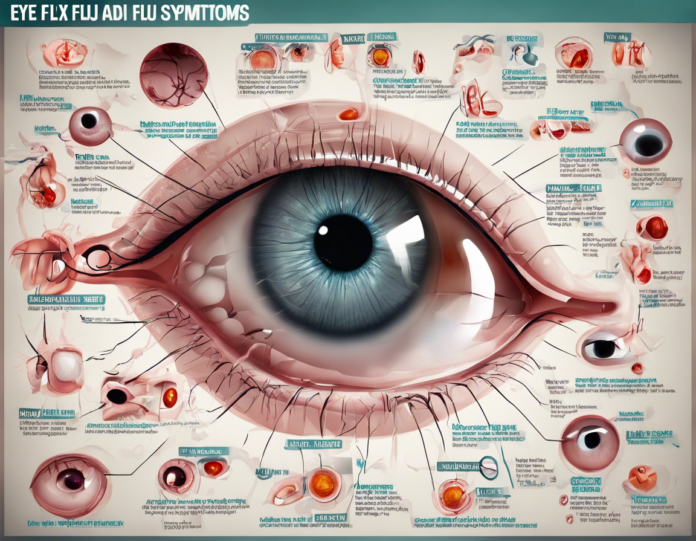The eye is a sensitive organ that is prone to various infections and diseases. One common eye condition that people may experience is eye flu, also known as conjunctivitis. This highly contagious infection causes irritation, redness, and discharge in the eye. Understanding the symptoms of eye flu is crucial in order to seek proper treatment and prevent its spread.
What Causes Eye Flu?
Eye flu can be caused by viruses, bacteria, or allergens. Viral conjunctivitis is the most common form and is often associated with upper respiratory infections, such as the common cold. Bacterial conjunctivitis can be caused by various bacteria, while allergic conjunctivitis is triggered by allergens like pollen or dust.
Symptoms of Eye Flu
-
Redness: One of the primary symptoms of eye flu is redness in the eye. The white part of the eye may appear pink or red due to inflammation.
-
Watery Eyes: Excessive tearing or watery discharge is common in eye flu. This discharge may be clear or slightly cloudy.
-
Itching or Burning: People with eye flu may experience itching or burning sensations in the affected eye or eyes.
-
Swelling: Swelling of the eyelids or the area around the eyes can occur in cases of eye flu.
-
Gritty Feeling: Some individuals may feel as though there is sand or grit in their eyes, leading to discomfort.
-
Sensitivity to Light: Photophobia, or sensitivity to light, is another symptom that may accompany eye flu.
Diagnosis and Treatment
If you suspect that you have eye flu, it is essential to consult an eye care professional for an accurate diagnosis. They will examine your eyes and may take a sample of eye discharge for testing. Treatment for eye flu depends on the underlying cause:
-
Viral Conjunctivitis: Most cases of viral eye flu are self-limiting and do not require specific treatment. Lubricating eye drops and cold compresses can help alleviate symptoms.
-
Bacterial Conjunctivitis: Antibiotic eye drops or ointments may be prescribed to treat bacterial eye flu. It is essential to complete the full course of antibiotics as instructed.
-
Allergic Conjunctivitis: Avoiding allergens and using antihistamine eye drops can help manage allergic eye flu symptoms.
Preventing the Spread of Eye Flu
To prevent the spread of eye flu, practice good hygiene:
-
Frequent Handwashing: Wash your hands regularly, especially after touching your eyes or face.
-
Avoid Touching Your Eyes: Refrain from touching or rubbing your eyes to reduce the risk of spreading infection.
-
Clean and Disinfect: Clean and disinfect surfaces that come into contact with your eyes, such as eyeglasses or contact lenses.
-
Avoid Sharing Personal Items: Do not share towels, pillowcases, or eye makeup to prevent the transmission of eye flu.
FAQs on Eye Flu
- Is eye flu contagious?
-
Yes, eye flu is highly contagious, especially in cases of viral or bacterial conjunctivitis. It can spread through direct or indirect contact with infected individuals.
-
Can I wear contact lenses if I have eye flu?
-
It is best to avoid wearing contact lenses until your eye flu symptoms have resolved to prevent further irritation or spread of infection.
-
How long does eye flu last?
-
The duration of eye flu can vary depending on the underlying cause. Viral conjunctivitis may last for 1-2 weeks, while bacterial conjunctivitis can be effectively treated with antibiotics within a few days.
-
Can I go to work or school with eye flu?
-
It is advisable to stay home from work or school until your eye flu symptoms have improved to prevent spreading the infection to others.
-
Should I see a doctor for eye flu?
- If you experience severe eye pain, vision changes, or if your symptoms do not improve with home care, consult an eye care professional for evaluation and appropriate treatment.
Understanding the symptoms and treatment options for eye flu is essential for maintaining eye health and preventing its transmission to others. By practicing good hygiene and seeking timely medical attention, you can effectively manage eye flu and protect your vision.









